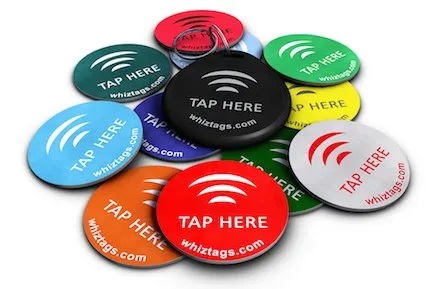
What are NFC Tags?
NFC (Near Field Communication) tags are small, wireless communication devices that can store a small amount of data and interact with NFC-enabled devices, such as smartphones and tablets. These tags use electromagnetic fields to transmit data over short distances. typically up to a few centimeters.
How NFC Tags Work
NFC technology operates on a principle similar to RFID (Radio-Frequency Identification). Heres a simple breakdown of how NFC tags function:
Passive Devices: NFC tags are passive devices, meaning they do not have their own power source. They derive power from the electromagnetic field generated by an NFC reader, such as a smartphone.
Data Transfer: When an NFC-enabled device comes close to the tag, it creates an electromagnetic field. This field powers the tag, allowing it to transfer its stored data to the reader.
Communication Protocol: NFC operates on the 13.56 MHz frequency and can transfer data at rates up to 424 kbit/s. It uses a protocol that allows both read and write operations, depending on the tag configuration.
Types of NFC Tags
NFC Forum Types 1–4 Tags: Defined According to the NFC Forum, each type varies in memory capacity, security features, and communication speed.
Type 1: Simple, cost-effective, low storage (93 bytes), suitable for basic applications.
Type 2: Flexible, moderate storage (up to 2 KB), more widely used.
Type 3: Faster communication, more storage (up to 1 MB), suitable for complex applications.
Type 4: High security, large storage (up to 32 KB), used for secure transactions.
NTAG Series: Developed by NXP Semiconductors, commonly used in consumer applications.
MIFARE: Another NXP product, widely used in public transportation and access control.
Uses of NFC Tags
Contactless Payments: NFC tags are used in payment systems like Apple Pay, Google Wallet, and Samsung Pay. They enable secure, contactless transactions by communicating with point-of-sale (POS) terminals.
Access Control: Used in key cards and ID badges to grant access to buildings, rooms, or systems.
Product Information: Retailers use NFC tags to provide customers with detailed product information, reviews, and promotions when they tap their phone on a product.
Smart Posters and Advertising: Marketers embed NFC tags in posters, allowing users to tap their phone to get more information, download an app, or participate in a contest.
Device Pairing: Simplifies the process of pairing devices like Bluetooth speakers, headphones, and printers by tapping the phone on the NFC tag embedded in the device.
Automation and Smart Home: Users can set up NFC tags to trigger specific actions on their phones or smart home devices, such as turning on lights, setting alarms, or connecting to Wi-Fi.
Ticketing and Boarding Passes: Used in electronic tickets for events and boarding passes for transportation, streamlining the check-in process.
Healthcare: NFC tags can store patient information, enabling quick access to medical history and facilitating better patient care.
Advantages of NFC Tags
Convenience: Enables quick and easy interaction by simply tapping a device.
Security: Supports secure communication protocols, making it suitable for sensitive applications like payments and access control.
Versatility: Can be used in various industries and for multiple applications.
Low Cost: Affordable and easy to integrate into products and systems.
Limitations of NFC Tags
Short Range: Works only within a few centimeters, which can be a limitation for some applications.
Limited Data Storage: Can store only small amounts of data, which may not be sufficient for all use cases.
Interference: May face issues with interference from metal objects or other electronic devices.
Future of NFC Tags
The future of NFC tags looks promising with advancements in technology and increasing adoption across different sectors. Some potential developments include:
Enhanced Security Features: Improving encryption and authentication mechanisms for more secure transactions and data transfer.
Greater Integration with IoT: Integration with the Internet of Things (IoT) to enable more seamless and interconnected smart environments.
Expanded Use Cases: New applications in augmented reality (AR), virtual reality (VR), and other emerging technologies.
NFC tags are a versatile and evolving technology with a wide range of applications, from simplifying daily tasks to enhancing security and convenience in various industries.